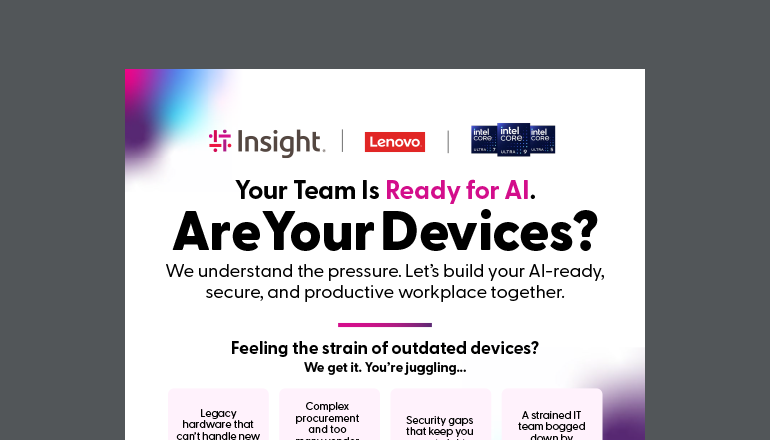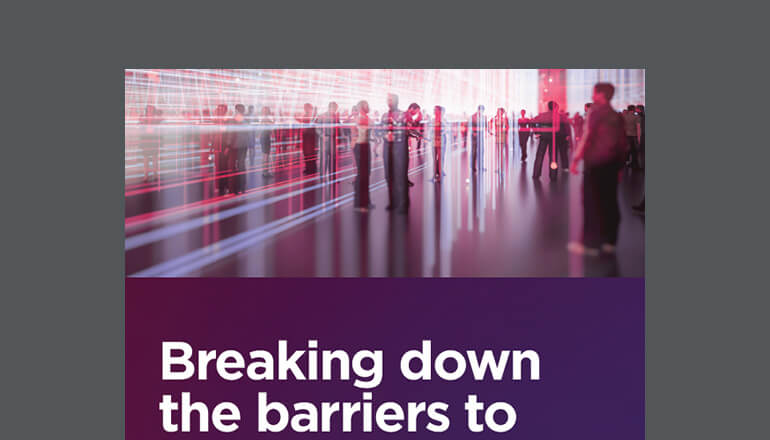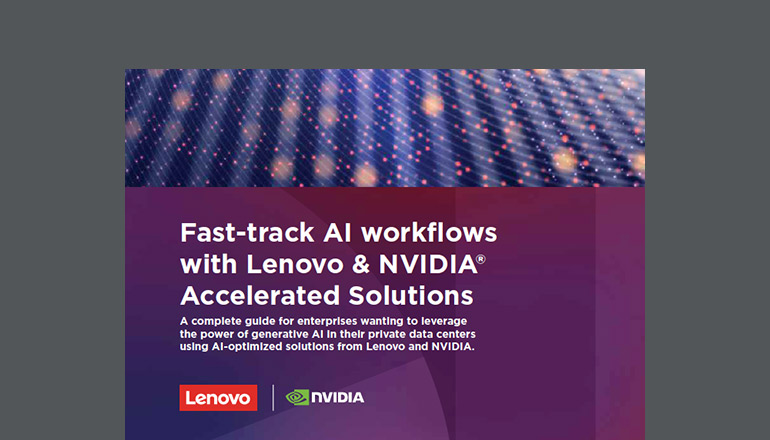Article The Top 5 IT Trends of 2018
By Insight Editor / 10 Jan 2018

As we begin 2018, we can once again take stock of an eventful past year of information technology disruptions and events that will directly shape the coming year. This is especially true for the rising global impact of data breaches, which the Ponemon Institute’s 2017 Cost of Data Breach Study pegged at $3.62 billion this past year alone.
But while data security incidents tend to grab the biggest headlines, other events in 2017 are hinting at far more digital disruption ahead in 2018.
From the ways blockchain technology is shifting towards the Internet of Things (IoT) sphere to a radical convergence of how enterprises will begin to handle continual disruptions, 2018 promises to continue the wild ride of radical shifts in how technology is shaping the way we do business.
Let’s take a look at some key IT trends and predictions we can expect to see in 2018.
Top 5 IT Trends for 2018
1. BIoT: IoT Meets Blockchain
It’s hard to estimate the impact that blockchain technology has had. Once limited to managing cryptocurrency storage, blockchain has emerged as an incredibly disruptive force that promises to change the way we interact with and control our internet-connected devices.
Enter BIoT – Internet of Things technology with a blockchain brain. The idea is to harness blockchain’s distributed computing capabilities to make IoT devices more secure from hacking.
Because of these devices’ well-known security vulnerabilities, 2018 will see more and more enterprises incorporating this into their supply and distribution models to make their data much more secure.
Combining IoT with blockchain —or BIoT—ushers in a whole host of new services and businesses. For example, BIoT can be used to track shipments of pharmaceuticals and to create smart cities in which connected heating systems better controls energy use and connected traffic lights better manage rush hour.
In 2018, companies will begin to use Application Programming Interfaces, or software used to connect different databases and computer services.
2. The Continuing Rise of AI
Another major area that has seen a meteoric rise in adoption is with Artificial Intelligence (AI) and machine learning. With AI now being incorporated into everything from Google searches to customer service chatbots, the technology promises to disrupt business operations and delivery in a major way.
To underscore this, Gartner points out that 41% of organizations have already made progress in piloting or adopting AI solutions.
However, commercially-viable AI technology is still relatively in its infancy, and businesses would be wise to closely examine their businesses case while clearly defining privacy and security policies before jumping head first into the pool and developing new AI technologies.
As Gartner describes the state of AI:
Although using AI correctly will result in a big digital business payoff, the promise (and pitfalls) of general AI where systems magically perform any intellectual task that a human can do and dynamically learn much as humans do is speculative at best. Narrow AI is where the action is today.
3. Proactive ‘Zero Trust’ Data Security
Experts across the board are predicting major disruptions to the IT industry, with more and more organizations adopting a “Zero Trust” security model. As malicious attacks on organizations continue to rise, most security experts believe the time has arrived to radically re-examine how access is granted to sensitive data.
It’s much more of a proactive approach than current models, which focus their attention on the weak links in the technology. Viewing ‘trust’ as a commodity that can be limited and measured out changes the way access is given and makes data hacking that much more difficult.
In 2018, we can expect to see significant disruption in the cybersecurity industry. Increasingly sophisticated cyber attacks are forcing organizations to turn to the zero trust security model.
With this approach, the IT team adopts a mindset of ‘we don’t trust anybody’. Only by explicitly allowing users to access systems can trust be established.
4. Dominance of the Subscription Model
If Netflix taught the world anything, it’s that there is an enormous appetite for “all-you-can-use” services. This has especially become true for Software as a Service (SaaS) offerings who have been shifting toward a recurring subscription model and away from the pay-as-you-go metered usage.
With Microsoft’s Office 365 per-seat E1 -E5 subscription models leading the way, 2018 promises to see more software vendors offer their services on an unlimited basis, ditching the usage meter and allowing enterprises to maximize their ROI.
…Most companies are switching to recurring revenue models. Already, you can order your clothing, groceries and cleaning supplies to be delivered directly to your doorstep on a weekly or monthly basis…We can expect to see startups expand their subscription businesses into more verticals and to start specializing.
5. The ‘Symphonic Enterprise’
Finally, how are enterprise-level organizations to deal with all of the disruptive changes to their technology?
Some, including Deloitte, see the emergence of a ‘symphonic’ approach that harmonizes strategy, data, and technology in a holistic fashion. Organizations will, according to this prediction, be better positioned to weather a changing landscape and will have an easier time overcoming otherwise crippling obstacles.
We are now seeing some forward-thinking organizations approach change more broadly. ..For example, blockchain can serve as a new foundational protocol for trust throughout the enterprise and beyond. Cognitive technologies make automated response possible across all enterprise domains. Digital reality breaks down geographic barriers between people, and systemic barriers between humans and data. Together, these technologies can fundamentally reshape how work gets done or set the stage for new products and business models.
What Does 2018 Hold For Information Technology?
What’s the likelihood that these visions will come to pass? Only time will tell. But the experts seem to agree that 2018 will be a particularly transformative year in terms of how businesses utilize and manage their data and technology.






